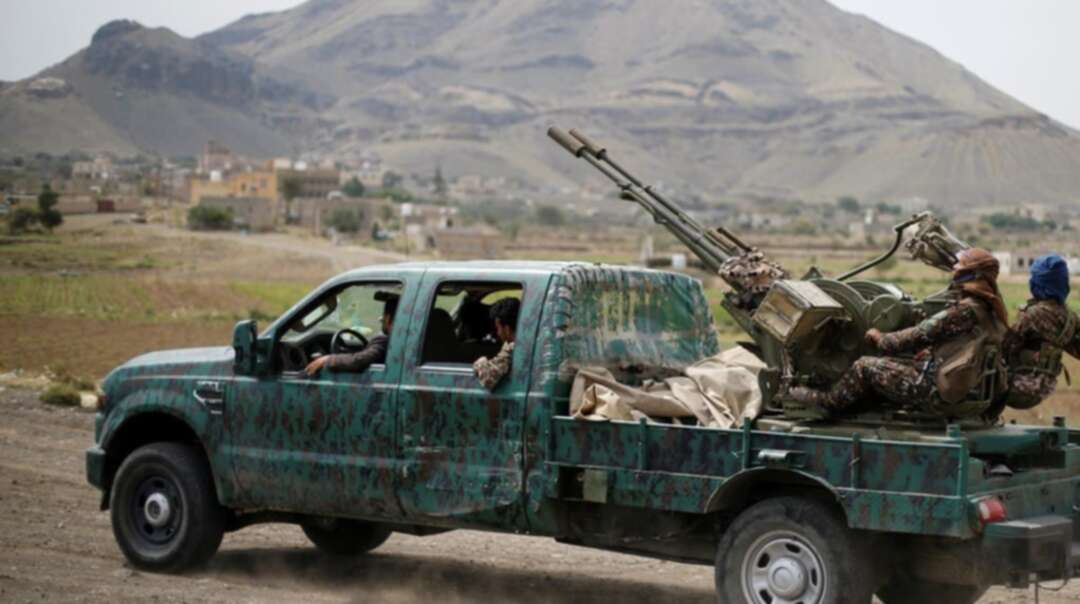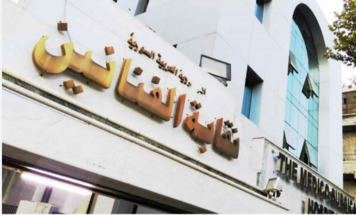-
Yemeni govt intelligence report reveals Houthis work closely with al-Qaeda, ISIS

Yemen’s internationally-recognized government accused the Iran-backed Houthi militia of working closely with both al-Qaeda and ISIS to inflict terrorism on the Yemeni people in an intelligence report submitted to the UN Security Council.
“This report, which is based on confirmed intelligence information and facts, sheds light on the close relationship between the Houthi militia and both al-Qaeda and ISIS, which is an extension of the relationship between Iran and terrorist organizations,” the government said in the report dated March 30.
In addition, the report shows how these militias are using their relationship with terrorist organizations to inflict more terrorism on the Yemeni people.”
The Houthis have intensified their attacks on Yemen and neighboring Saudi Arabia in recent weeks. One civilian was killed and six others were wounded on Tuesday after a ballistic missile launched by the Iran-backed militia fell in the middle of a residential neighborhood in Yemen’s Marib, Al Arabiya reported citing local sources.
Marib is the last major northern stronghold for pro-government forces and is home to one of Yemen’s largest oil infrastructures.
Misusing security information
When the Houthis took control of Sanaa, the group seized all information collected by the government’s national and political security services, according to the report.
The Houthis “manipulated and misused
The Yemeni government said the Houthis and the terrorist organizations have been cooperating in various fields, including security and intelligence, providing a safe haven for many members of the terrorist organizations, coordinating combat operations against the legitimate forces, permitting the terrorist organizations to build and fortify their strongholds, while avoiding confrontations with them.
A ‘safe haven’ for terrorist organizations
The Iran-backed group also released 252 terrorist prisoners who were jailed in the national and political security prisons of Sanaa and other governorates, the report revealed.
Jamal Mohammed al-Badawi, one of the terrorists behind the bombing on the US Navy destroyer the USS Cole, was freed from jail by the Houthis, the report stated. In October 2000, the USS Cole was bombed in a suicide attack carried out by al-Qaeda in the Yemeni port of Aden, killing 17 sailors, injuring 39 others, and damaging the ship.
Fifty-five al-Qaeda terrorists are currently in Sanaa and other Houthi-controlled areas, the report added.
The report also includes testimonies of al-Qaeda members who were captured by Yemen’s National Army Forces while they were fighting alongside the Houthi militia.
Al-Qaeda member Musa Nassir Ali Hassan al-Melhani admitted to the presence of al-Qaeda fighters within the Houthi militia, and said that the Iran-backed group heavily relies on the fighters in Sanaa.
The Yemeni government said that the Houthis and terrorist organizations plan coordinated criminal acts that threaten the security and stability of Yemen and the region, as well as international shipping lines.
The government called on the Security Council and the international community to “stand against the terrorism practiced by these militias, and to support and agree the efforts exerted by the legitimate government and the National Army to end their battle against all aspects of organized terrorism by these Houthi militia against all Yemenis.”
source: Tamara Abueish
Image source: Reuters
Levant
You May Also Like
Popular Posts
Caricature
BENEFIT Sponsors Gulf Uni...
- April 17, 2025
BENEFIT, the Kingdom’s innovator and leading company in Fintech and electronic financial transactions service, has announced its sponsorship of the “Innovation and Sustainable Technology Solutions Competition (GU - IST Solutions), hosted by Gulf University at its main campus.
This strategic sponsorship reflects BENEFIT’s active role in advancing technological innovation and fostering sustainable solutions to future challenges. It also seeks to empower Bahraini youth by enhancing their skills, capabilities, and competitiveness in innovation and solution development—contributing meaningfully to the broader goals of sustainable development across all sectors.
As part of BENEFIT’s active involvement in the competition, the company has announced that Hanan Abdulla Hasan, Senior Manager of Public Relations and Communication, will serve on the competition’s supervisory committee. Her upcoming participation reflects BENEFIT’s forward-looking commitment to championing academic and professional excellence.
Commenting on the occasion, Hanan Abdulla Hasan, Senior Manager of Public Relations and Communication at BENEFIT, said, “We are privileged to support this pioneering initiative, which aligns seamlessly with BENEFIT’s enduring commitment to fostering innovation and nurturing the potential of Bahrain’s youth. Our participation is rooted in a deep sense of social responsibility and a firm belief in the pivotal role of innovation in shaping a sustainable future. Through such platforms, we seek to empower the next generation with the knowledge, skills, and foresight required to develop impactful solutions that address future challenges, in line with the United Nations Sustainable Development Goals 2030.”
Dr. Aseel Al Ayash Dean of the College of Engineering in Gulf University commented, “We extend our sincere gratitude to BENEFIT for their generous sponsorship and support of the Innovation and Sustainable Technology Solutions Competition. This contribution plays an instrumental role in helping us achieve the strategic goals of this initiative, namely, cultivating a culture of innovation and sustainability, encouraging efforts that address the imperatives of sustainable development, and enhancing the practical and professional capabilities of our students and participants.”
The event will bring together a diverse spectrum of participants, including secondary school students, university undergraduates, engineers, industry professionals, entrepreneurs, academic researchers, and subject matter experts representing a wide range of disciplines.
The competition seeks to inspire participants to develop and present innovative, sustainable technologies aimed at addressing pressing environmental, social, and economic challenges. It encourages the formulation of business models that integrate advanced technological solutions with core principles of sustainability. Moreover, it serves as a platform for emerging leaders, entrepreneurs, and innovators to contribute to the advancement of the Sustainable Development Goals, promote the ethos of responsible technology, and demonstrate its transformative potential across various sectors.
Attendees will have the opportunity to view a series of project presentations submitted by participants, covering diverse areas such as eco-friendly product design, smart and sustainable innovations, renewable energy technologies, water conservation and management, waste minimisation and recycling, green architectural solutions, and sustainable transportation systems. Outstanding projects will be formally recognised and awarded at the conclusion of the event.
opinion
Report
ads
Newsletter
Subscribe to our mailing list to get the new updates!






















